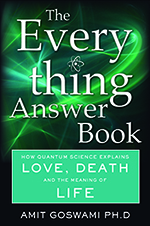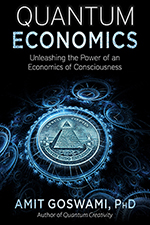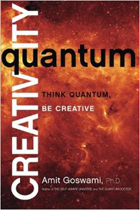If you are reading this and have taken interest in my work, you had many incarnations before this one and you have got a personal archetype—your dharma. If you have gone through an enneagram analysis, you should have narrowed down your dharma a lot; quantum astrology may give you further hints. Read our article in our journal by clicking this link: https://www.journal.cqaedu.com/
If you feel you are ready to join your archetypal journey in earnest, the first step is to make sure what your chosen archetype is and what better for this confirmation than delving into your memory bank and try to remember your childhood propensities that you truly enjoyed using. As a corollary exercise, you can reflect on your good karma at various periods of your life: childhood, age 3-11; teen years, age 12-19; adulthood, age 20 to midlife transition if you are there; midlife transition to present. What did you enjoy doing most during each period? Did you explore what you enjoyed the most? How did you find yourself in the current profession? Is your current profession still invigorating?
Your deathbed in your last incarnation where is when you probably chose your dharma. You were in your nonlocal consciousness then. See if you can fall into tht consciousness again so the choice can pop into your head.
Intention is important. Whenever you engage in an excursion in your memory lane, begin with an intention ritual in the following four steps after you get yourself inspired (how? Listen to expansive music, look at a flower, etc.):
- Make you intention: let this exercise reveal my dharma; think it again, make you resolve strong;
- Use your inspired openness to share the fruit of your intention useful for everybody: think “I will use my intention for the greater good”;
- Resolve: let my intention be consonant with the purposive movement of consciousness; make your resolve strong;
- Let your creative intentionality gradually dissolve into silence; wait as long as you can for an intuition to come, if it does.
One thing you may try before anything else is to find pictures of various gods and goddesses in Hindu, Greek, Roman and other traditions; find out the archetype each represents. Then meditate on the picture every day for a while to see if you feel a connection to a particular god or goddess. Do the same thing with archangels of Christianity.
Dream Analysis
Like most people today, you probably have only a cursory interest in dreams. Unless you are a depth psychology aficionado, it is likely that you don’t pay much attention to such a recurring aspect of your life. Big mistake. Anything that is built into our make-up and comes to us regularly is obviously bringing us vital information. The question is about what? Since dreams seem to have no causal continuity, no obvious connection to our waking events of life, this is a very good question. The answer given by quantum science may surprise you: dreams tell us about our meaning life. From this perspective, there is causal continuity in dreams, they do have connections to waking event, but you have to be sensitive to your meaning life to catch it.
Quantum science says something else as well: dreams bring us messages of purpose of our life to us and therein is their major importance in the present context. Dreams can be divided into five classes each talking about each of the five-fold experiences we have and the relevant software: Physical-vital, brain-based emotional, mental, archetypal—soul level, spiritual. The first three reflect our personal unconscious; they are interesting only when they tell us about cleansing that goes on when we join purposive journey in life. It is the archetypal-soul level dreams, psychologists call them by many different names, that are the most relevant to us for finding our dharma.
Jung called these dreams “big” dreams. Why? Sometimes they are big enough to change the direction of your life. In the beginning and end of each of the passageways we live roughly given by the ages above, these big dreams come to remind you of the transition. At each of these transitions, where are you in your self-identity? is a question that comes up and again and again; big dreams may give the hint of an answer.
Sometimes but not always, big dreams come when a significant relationship in our life ceases, via passing away, divorce, desertion, unemployment from a professional job you liked, etc. Why? These relationships often have much to do with the archetype of interest to us.
Why do psychologists call these archetypal dreams initiatory? Now you know; because they initiate a new life, a change from causal emphasis to emphasis on purpose, from sensory world of the external material stimuli to the extrasensory perceptions of the intuitive world. Some cultures even have formal initiation ceremonies: Hindu brahmins have Upanayan, kind of a second birth; Some Christians also have this born-again ritual; native Americans have vision quest.
The archetypal dreams universally have strong emotions attached to it, mostly positive emotions and joy reverberates when we wake from them; but sometimes they bring intense sadness, too. Initiation dreams can even evoke terror, for example of being devoured by an animal. Do you see why? we are being asked to face our biggest fear—fear of death—death of the ego.
I (Amit) once dreamt a super-charged highly emotional dream. I was in a war with an enemy; one by one, I am sending my relatives to fight, and they are not coming back. Finally, only I am left. I pick up my sword, deep sigh, and think to myself, “What has to be done has to be done.” With that I go out, join the fight, and die.
People see the same theme in slightly different forms as described in our mythology: They may be swallowed whole by a sea monster (Jonah and the Whale) or sent into the underworld (as Orpheus went to find his beloved Persephone but failed and died).
Death of the ego to be born again as the soul, sometimes the initiatory dream tell us the whole theme, death of the ego and then rebirth as a soul (as in the Egyptian myth of Osiris, the god of order, who was killed by the god of disorder and was made whole again by his sister, the goddess Isis).
But we live in a highly mechanical culture where such myths don’t visit most of us even in dreams. Today’s archetypal dreams are much milder versions of these mythological stories. You can tell, because there are certain common elements to these initiation dreams; examples are:
- Crisis scenes, earthquakes for example, or being struck by lightning
- Encounters with guides or otherworldly beings, commonly extraterrestrial
- Encounter with superpowers (like superman, wonder woman)
- Images of gods and goddesses, e.g. Siva, Kali, Athena, Zeus, archangel Gabriel
- Radiant beings, beings of light
- Snake bites (usually on the hand or the heart)
- Visitations from deceased ancestors you lov e or respect
- Engaging in a ritual or rite of passage
- Confronted or swallowed by a sea monster or creature; yes, this is still a common theme
- Dismemberment (as in Amit’s dream; this is common)
- Death and rebirth motifs
- House being demolished as personal unconscious gives way to collective unconscious
- Car Accident, car signifying the vehicle of the ego
- Journeys to different worlds signifying higher states of consciousness
- Out-of-body dream experience
These archetypal themes are the language of Oneness consciousness. As the psychologist Linda Mastrangelo says, “It is the [archetypal] dream (the final frontier!) that bestows us access to “soul knowledge,” namely in the form of big dreams.
As stated earlier, the archetypal dreams evoke high mostly positive emotional intensity. This is an important change from mental dreams. Remember archetypes can be represented by both thoughts and feelings. The meaning you put in the dream image you see, known archetypal symbol or not, if it is associated with intense feelings, it will have archetype-revealing power. It will strike a chord, a resonance with your dharma; once revealed your chosen archetype will continues to resonate with how purpose manifests in your life.
Creativity researchers talk about crystallization experience in the waking state. There are many more crystallization experiences that can result from dreams except that it requires analysis. Gestalt psychologists, Jungian psychologists, depth psychologists in the tradition of James Hillman, they all can help you in analyzing dreams and find your personal archetype that defines your soul/self, the station beyond ego in this life.
In quantum activism workshops, we, too, use dream analysis for this purpose. We suggest that you initiate the dreaming process by making an intention, follow the intention ritual. Keep a notebook by bedside with a penlight; when you wake up after a dream, write down one significant image in the dream. That will help you remember the whole dream in the morning when your first priority is to write down the whole dream. In the workshop I (Amit) would act as a gestalt therapist to analyze the dream with you. As you put meaning into the images (they all represent your meanings, but some of the meaning are resonant with your archetype), I ask you
look for the feelings they evoke. If there is no immediate feeling that comes forth, you confront your dream image, and ask it revealing questions to see if you can evoke feeling. It is the images with intense associated feeling that are the fingers pointing to the archetype. The meaning and feeling that you associate with a dream symbol, if they are suggestive of the archetype, will resonate with you. When the named archetype resonates with your heart or navel, you know.
. .
….. excerpts from ‘Everything answer book’



